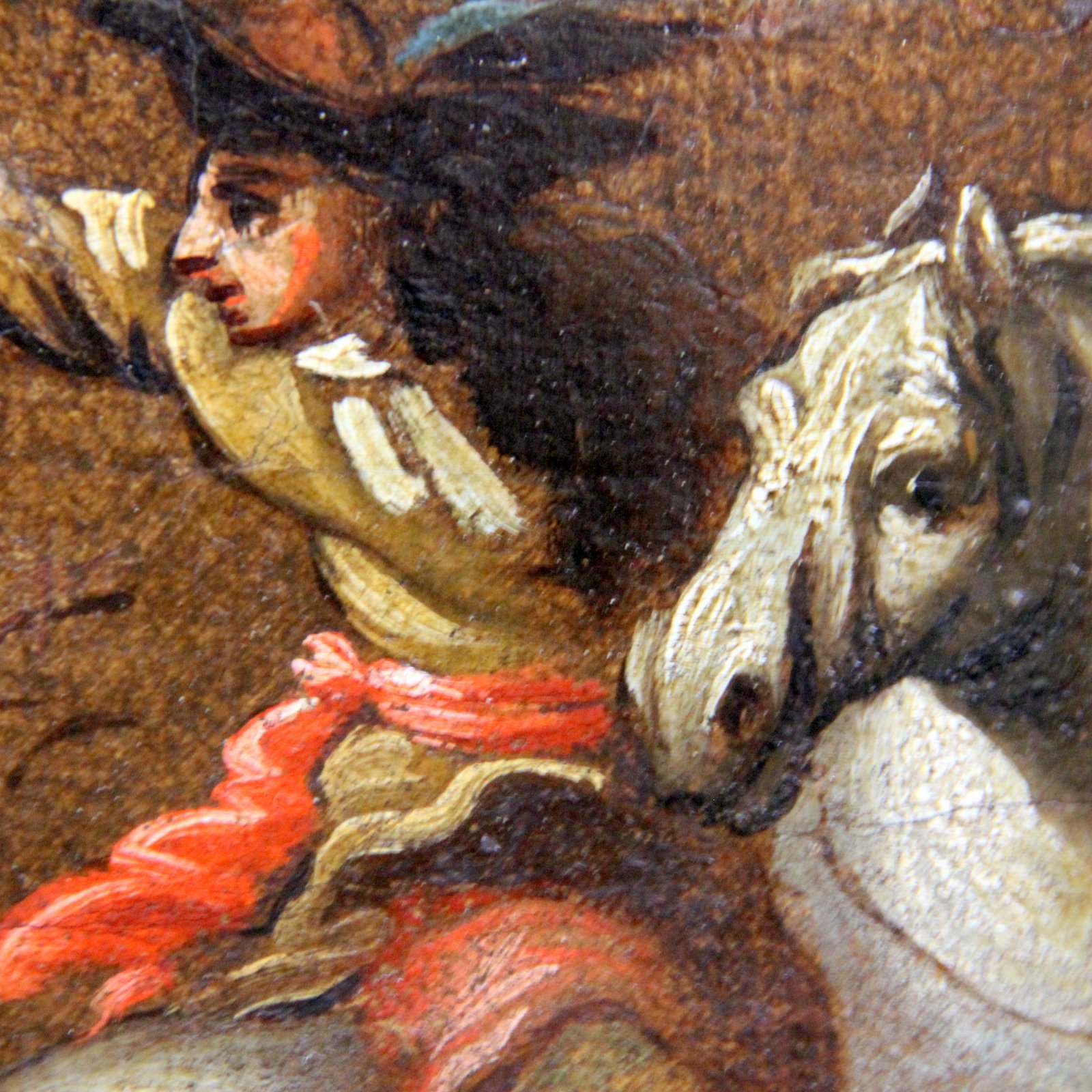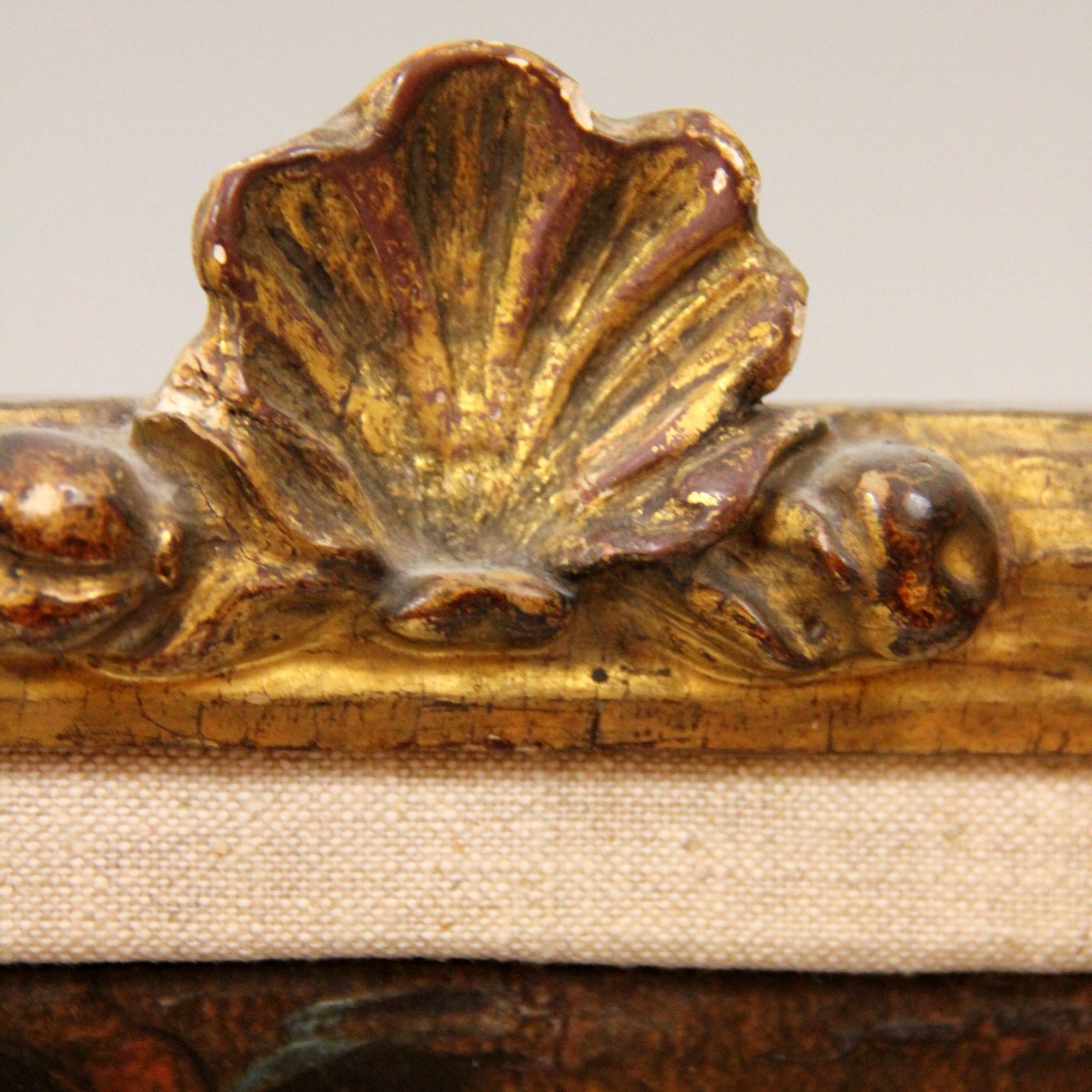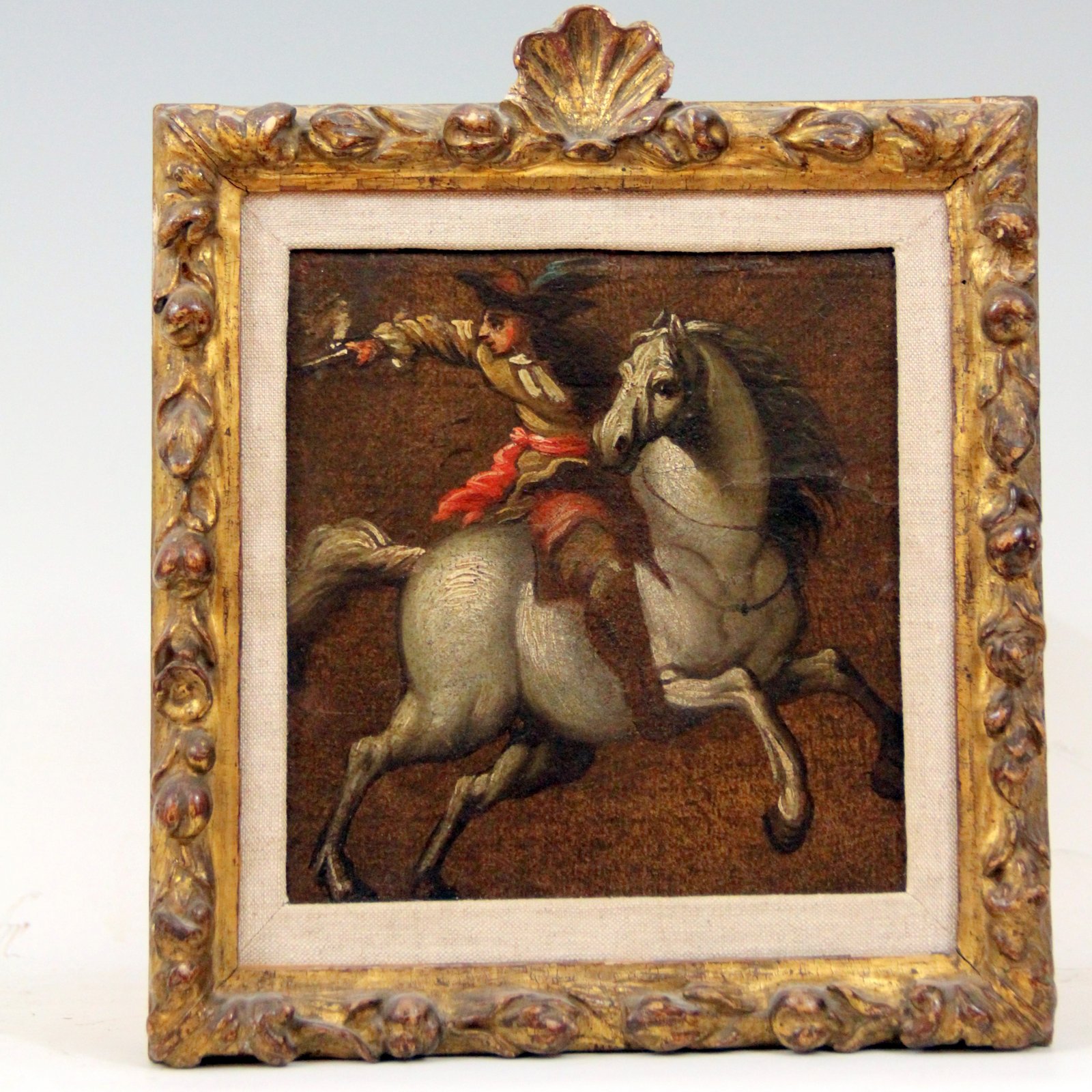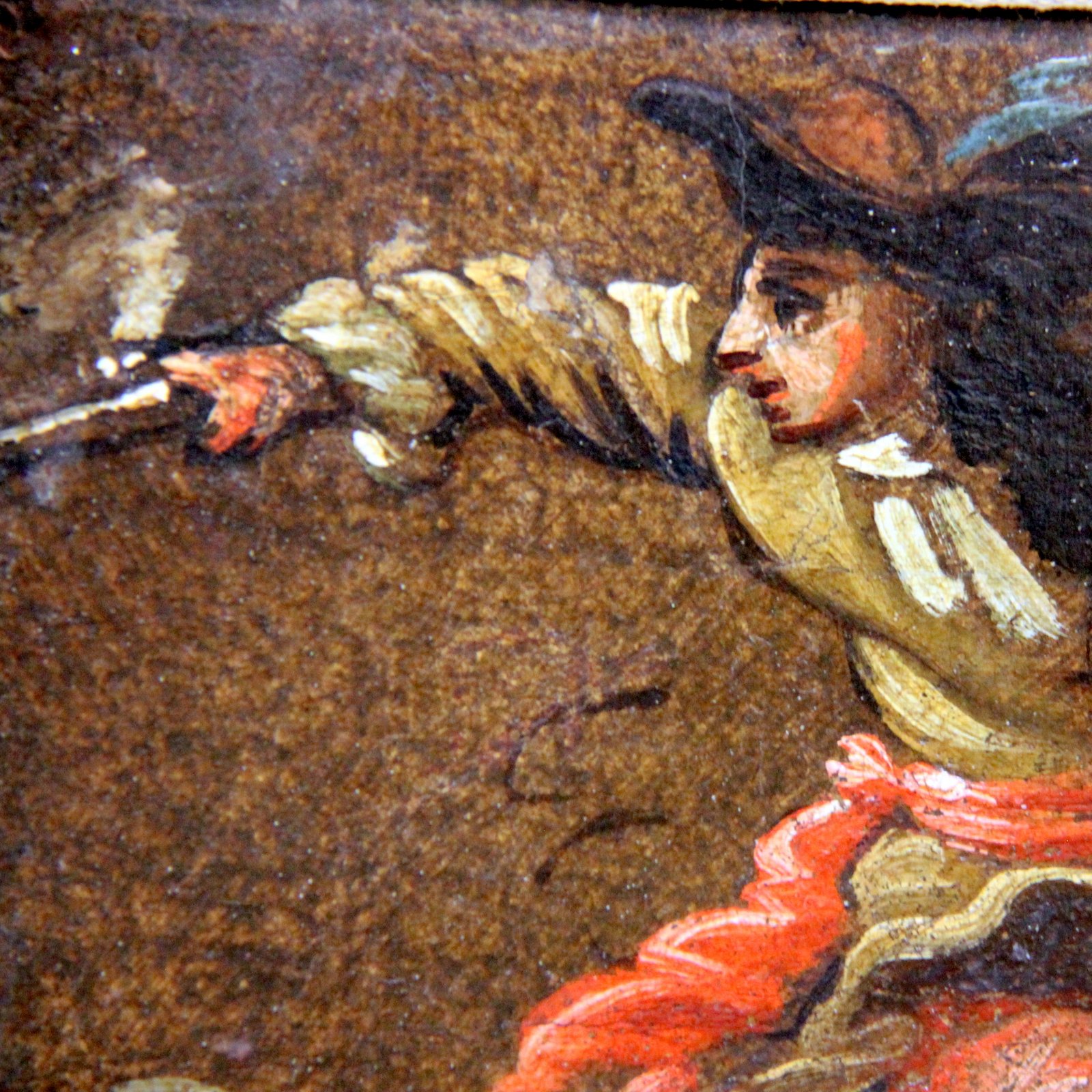Cavalier and his mount (17th century) ◊ Oil painting
1800,00€
Rare 17th century painting
Oil on paper mounted on wood
Molded and gilded frame
Height 20 cm x Length 20 cm
Excellent state
Description
This small, apparently modest painting is part of the prestigious tradition of the equestrian portrait, reserved for princes, lords and warlords, having enough fortune and free time to practice equestrian art, with the aim of waging war or to hunt. To mention only the most famous painted or carved works : the Roman Marcus Aurelius (175 AD), the Colleone of Verrochio in Venice (late 15th century), the Charles V of Titian (c. 1547), the Duke of Lerma of Rubens (1603), etc.
Our rider turns to fire his musket, avoiding to hurt and stun the horse to the head. This weapon, arrived around 1550, capable of piercing an armor at 80 meters, makes the wearing of the armor obsolete. Disadvantage, it is very noisy, releases a cloud of smoke (visible here). So many disturbances that impose a high equestrian level on both combatants. Indeed, their complicity is read on the one hand, in the rider’s plate (which holds the reins – relaxed! – only with one hand, despite the galloping of the horse), on the other hand, in the postures in the same direction and the particularly present, humanized look of the mount.
The Renaissance went through there with its taste for perspective, for the three-dimensional representation better expressing reality. The representation in three-quarter, rather than profile. Typical of the XVIth and XVIIth centuries, the proportions horse / rider : the rider only surpasses by one head his small, round and muscular mount, which is inscribed in a square. This is called a “baroque” model, as in art. The horse must impress as much by its ardor as by its beauty…









